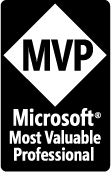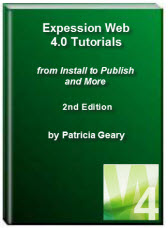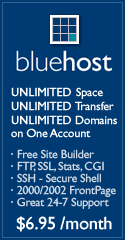- Home
- Expression Web Tutorials
- Installing Expression Web 4
- Setting Up Expression Web 4.0
- Create New Website
- Create a Blank Web Page
- Create a Webpage Layout
- Adding Horizontal Top Navigation
- Adding Vertical Navigation
- Validating Your Pages
- Creating an Expression Web Dynamic Web Template
- Publishing Your Web Site
- How to back up your local website on your hard drive
- SEO Checker and Report
- Adding Insert Include Code into Code Snippets
- Auto Thumbnail in Expression Web
- Broken Dynamic Web Templates and hidden metadata files
- Code Snippets in Expression Web
- Compatibility Checker on Status Bar in Expression Web
- Create and Style a Data Table
- Creating a New Font Family Group
- Creating a New Page from Hyperlink Properties
- Creating web site from site templates in Expression Web
- CSS Properties panel
- Expression Web Preview in Browser
- Expression Web and Design Time Includes
- How to back up your local website on your hard drive
- How to create a Personal Web Package
- Import Site Wizard in Expression Web
- Importing your folders/files into Expression Web
- Inserting Images in Expression Web
- Interactive Buttons in Expression Web
- Migrating a FrontPage Site to Expression Web
- Modify Style Dialog Box
- New Style Dialog Box
- Publishing Your Website from the Remote Server with FrontPage Server Extensions
- Editing Reusable Forms
- Troubleshooting Image Problems in Expression Web
- Validation Error - no attribute "xmlns:v"
- Web Album Generator and Expression Web
- What are all the style# in my page?
- Zoom Search and Expression Web
- Working With Left Border Background Images
- Resources
- Templates
- Web Design Tutorials
- Accessible Forms
- Add a Search Box
- Adding Google Search
- Accessible Data and Layout Tables
- Responsive Tables
- Anchor Tags and Name Attributes
- Best Font Size for Web Design?
- Center Page in Browser Window
- HTML Lists
- How to create and extract a Zip File in Windows
- How to Create a Self-Extracting Zip File
- Validation Error - no attribute "xmlns:v"
- Working With Left Border Background Images
- Handle Background Transparency in Snagit Editor Like You Would in Photoshop
- Bluehost Tutorials
- Add-on Domains at BlueHost
- BlueHost 301 Redirects
- BlueHost Webmail
- Customizing BlueHost Error Pages
- How to make a subfolder the main folder for your BlueHost main domain
- How to change the Primary Domain
- Installing a WordPress Blog Using Simple Scripts
- Mannaging SSL on BH
- Password Protecting Directories and/or Files with Bluehost
- Server Side Includes, BlueHost, and Expression Web
- Expression Web Addins

New Style Dialog Box
NOTE: Screenshots were taken using Expression Web 3.0 with the default color scheme. Your screen may look slightly different depending on the version and color scheme you have selected. All examples are using the Organization 3 default template.
The New Style dialog box enables you to design a new style and preview the style's appearance as you design it. You can access the new style dialog box from a variety of locations.
To open the New Style dialog box, use the Apply Styles, Manage Styles, or the CSS Properties panel. You also open the New Style dialog box by using the Format menu or the Style toolbar.
Both the Apply Styles and Manage Styles Task Panels (Panes in EW 1 & 2) has a New Style Icon.
![]()
Figure 1: New Style icon
To create a new style by using the New Style dialog box
Do one of the following:
- To add a style to an external CSS, open the .css file.
- To add a style to an internal CSS, open the web page.
- To add an inline style, open the web page, and then select the content you want to style.
Do one of the following:
- Click the New Style Icon on the either the Apply Styles or Manage Styles task panel.
- Click New Style on the Format menu or Style Toolbar.
- To copy an existing style in the Apply Styles, Manage Styles or CSS Properties panel, right-click the style that you want to copy, then select New Style Copy.

Figure 2: New Style dialog box.
Click thumbnail for larger image.
The New Style dialog box enables you to define everything about your new style:
| Use this | To do this |
|---|---|
| Selector (1) |
|
| Define in (2) | Select one of the following: Current page adds the new style to the internal CSS in the current web page. New style sheet adds the new style to a new blank external CSS. Existing style sheet adds the new style to an existing external CSS that you specify. |
| Apply new style to document selection (3) | Apply the style to the current selection in the current web page. |
| URL (4) | If you selected Existing style sheet in Define in, enter the URL to the .css file. |
| Category (5) | Select any of the following, and then set the properties that appear to the right in the dialog box:
|
Real Life Examples: In the Creating web site from site templates in Expression Web tutorial, I mention creating a style that will keep your images that are hyperlinked from having the ugly blue line around them. I used the default template Organization 3 in that tutorial.
Step 1: Open the site you wish to work with in Expression Web. Double click the style sheet that is attached to the template to add this new style.
Step 2: From the Manage Styles or Apply Styles panel, click the New Style icon.
Step 3: In the New Style dialog box, do the following:
- Selector: Choose body from the dropdown menu. Enter a space and type img
- Border: Type 0 in the border-width box
- Font: text-decoration: none
- Click OK.
As you create the style, you will see a preview and a description of the style. Once you click OK, the style will be added at the bottom of the style sheet. You can leave it there or copy and paste it just under your first body style. If you do move it, make sure and delete the bottom one.
body img { text-decoration: none; border-width: 0px; }
You can also type the style directly into the style sheet and IntelliSense will help you with that. For example, if you type a CSS selector and then a left curly brace ({), IntelliSense displays an alphabetical shortcut menu of all available properties. After you select a property from the menu or type the property, IntelliSense can display a different shortcut menu that contains values that are appropriate for the property you selected.
body img { text-decoration: none; border: 0px; }
Once you are familiar with CSS you may well find that a quick edit in the CSS Properties task pane/panel directly onto the CSS file is more efficient and easier than going through all the dialog box steps.
The New Style and Modify Style dialog boxes provide the same categories and properties. The properties that appear to the right of the Category box, reflect the selected category.
Expression Web 4.0 Tutorials 2nd Edition from Install to Publish, a FREE EBook by Pat Geary.
Expression Web has a group on Facebook. If you are a FB user, come join us.
Disclosure: This is an affiliate link, which means that if you visit Bluehost.com through this link and purchase this product, I’ll get a commission.

April 2007 - April 2013
Privacy Policy | Migrating from FrontPage to Expression Web
Microsoft® and Expression Web® are registered trademarks of Microsoft® Corporation.
Site Design & Maintenance : Expression Web Tutorials & Templates



